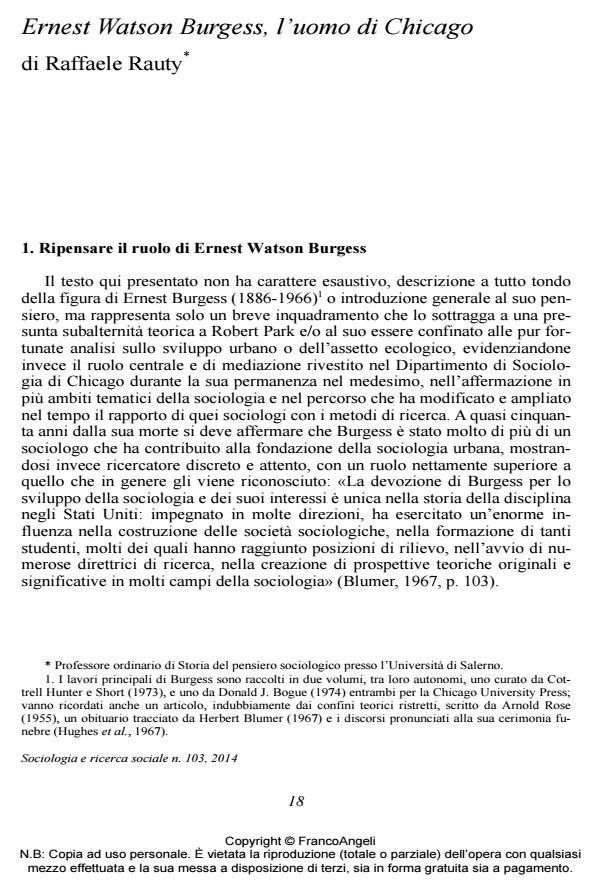Ernest Watson Burgess, l’uomo di Chicago
Titolo Rivista SOCIOLOGIA E RICERCA SOCIALE
Autori/Curatori Raffaele Rauty
Anno di pubblicazione 2014 Fascicolo 2014/103
Lingua Italiano Numero pagine 22 P. 18-39 Dimensione file 105 KB
DOI 10.3280/SR2014-103002
Il DOI è il codice a barre della proprietà intellettuale: per saperne di più
clicca qui
Qui sotto puoi vedere in anteprima la prima pagina di questo articolo.
Se questo articolo ti interessa, lo puoi acquistare (e scaricare in formato pdf) seguendo le facili indicazioni per acquistare il download credit. Acquista Download Credits per scaricare questo Articolo in formato PDF

FrancoAngeli è membro della Publishers International Linking Association, Inc (PILA)associazione indipendente e non profit per facilitare (attraverso i servizi tecnologici implementati da CrossRef.org) l’accesso degli studiosi ai contenuti digitali nelle pubblicazioni professionali e scientifiche
Ernest Watson Burgess is mostly known as the man of «urban growth» or as the co-author, with Robert Park, of The Introduction to the Science of Sociology. However, his theoretical approach was also connected to issues of parole violation, juvenile delinquency and, significantly, to the debate on methods of research. Burgess, who directed several surveys and had a strong proclivity for case studies and firsthand data, combined his inclination with a strong flexibility in the use of research methods, which emphasized the value of the statistical approach in a positive relationship with William Ogburn, main member of the department of quantitative methods.
Raffaele Rauty, Ernest Watson Burgess, l’uomo di Chicago in "SOCIOLOGIA E RICERCA SOCIALE " 103/2014, pp 18-39, DOI: 10.3280/SR2014-103002